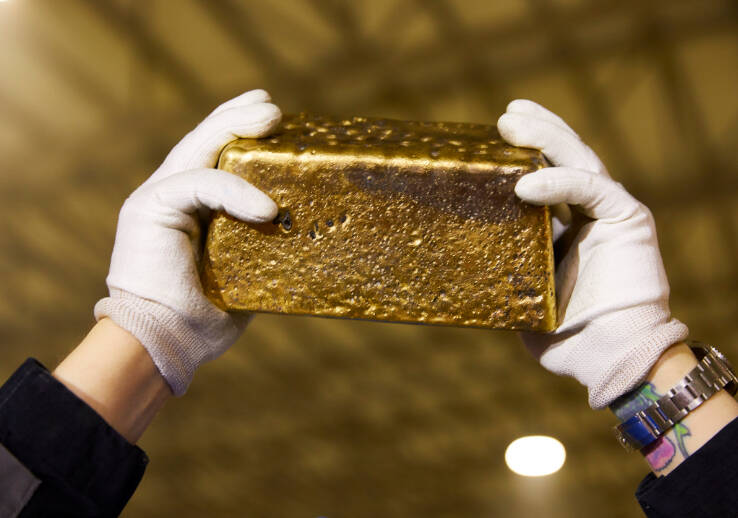By the numbers: Facts and figures about mining and exploration in the NWT and Nunavut
The amount of money that companies planned to allocate for mineral exploration in Nunavut and the NWT rebounded in 2021 compared to preliminary estimates from 2020.
In Nunavut, there was $85.4 million of projected exploration to be done this year. If it goes as planned, that would be an increase of 20.3 per cent from $71 million the previous year. However, both figures pale in comparison to 2019, when $116.4 million was expended.
In the NWT, the jump is to $47.7 million in anticipated spending in 2021 from $35.4 million in preliminary exploration work in 2020, a difference of 34.7 per cent. Like Nunavut, the NWT showed more robust interest in 2019 when exploration attracted $79.8 million in investment.

ᒎᓗᒥ ᓴᓇᓯᒪᔪᖅ ᐊᒡᓂᑯ ᐄᒍᓪᑯᑦ ᓴᓇᓚᐅᖅᑕᖓᓂ ᑭᕙᓪᓕᕐᒥ ᐅᔭᕋᖕᓂᐊᕐᕕᖓᓂ ᐊᐅᓚᑕᐅᓂᖓᓂ. ᐅᔭᕋᖕᓂᐊᕐᕕᒃ ᑲᒻᐸᓂ ᐊᑭᓖᓚᐅᖅᐳᑦ $115 ᒥᓕᐊᓐᓂ ᑖᒃᓯᓂᑦ, ᓂᖏᖅᑕᕐᓂᓂ ᐊᒻᒪ ᐊᓯᖏᓐᓂ ᐊᑭᓕᐅᑕᐅᔪᓂ ᓄᓇᕗᒻᒥ ᒐᕙᒪᒃᑯᓐᓄᑦ, ᑲᓇᑕᒥ ᒐᕙᒪᒃᑯᓐᓄᑦ, ᓄᓇᕗᒻᒥ ᑐᙵᕕᒃᑯᓐᓄᑦ ᐊᒻᒪ ᑭᕙᓪᓕᖅ ᐃᓄᐃᑦ ᑲᑐᔾᔨᖃᑎᒌᖑᔪᓄᑦ 2020−ᒥ.
Quebec was the runaway leader nationally in enticing companies to commit exploration dollars in 2021, projected at $988.2 million.
The figure for Canada this year is expected to hit $2.9 billion, up from $2.1 billion a year earlier.
- A total of 100 new claims were staked in the NWT in 2020, encompassing a total area of 75,440.5 hectares, according to the NWT Geological Survey. The GNWT disbursed $1 million through the Mining Incentive Program in 2019-20 to nine prospectors and eight companies. In 2020-21, another $1 million went to 13 prospectors and seven companies.
- There were 129 prospecting permits issued in Nunavut in 2020, down from 137 in 2019. Claims totalled 2,454 in 2020, a reduction from 2,588 the previous year. The number of leases was identical in both years, at 519. In total, that accounts for approximately 18,530 square km in the Kivalliq region, 18,460 square km in the Kitikmeot region and 12,000 square km in the Qikiqtani region.
- De Beers and Mountain Province Diamonds, owners of the Gahcho Kue diamond mine, spent close to $193 million with NWT-based companies in 2020. Of that total, $85 million went to Indigenous companies. Since 2015, those figures rise to $1.25 billion spent with Northern businesses, while $442 million of that went to Indigenous enterprises in the NWT.
- Gahcho Kue mine employed 296 NWT residents in 2020, representing half of the workforce. Of that total, 57 per cent self-identified as Indigenous, accounting for 28 per cent of all mine workers. Women comprised 19 per cent of employees.
- De Beers and Mountain Province Diamonds have invested $3.1 million in community social development projects since Gahcho Kue began operations ($748,000 in 2020 alone). This includes realms such as culture and heritage, education and training, health and safety and sport.
- Rio Tinto’s majority owned Diavik diamond mine employed 486 Northerners within its 1,100-person workforce in 2020. Women make up 14 per cent of all staff.
- Since 2000, Diavik has been responsible for injecting $6.4 billion in spending into the Northern economy. In 2020, $189 million was directed to Northern non-Indigenous businesses while another $132.6 million went to Northern Indigenous-owned ventures.
- Diavik designated more than $700,000 toward Covid-19 community initiatives in 2020.
- More than $120 million has been invested in the Nechalacho rare earths project, 100 km southeast of Yellowknife, since inception. Of the 60 employees working on rotation earlier in 2020, 85 per cent were Northerners and 70 per cent were Indigenous.
- Total income paid to Agnico Eagle’s 378 full-time equivalent Inuit employees in 2020 amounted to $26.8 million. More than half of that went Nunavummiut workers who were sent home for safety reasons as the Covid-19 pandemic emerged. Those employees retained 75 per cent of their base pay throughout the remainder of 2020.
- Agnico Eagle spent $630 million with Inuit businesses in 2020, an increase of 26 per cent over to 2019. “The proportion of expenditures going to Inuit businesses has almost continually risen over the last decade,” the mining company stated.
- Since the beginning of its operations in the Kivalliq region, Agnico Eagle has contributed $2.6 million toward education-based initiatives.
- Agnico Eagle’s remittance of taxes, royalties and other payments to the Government of Nunavut, Government of Canada, Nunavut Tunngavik Incorporate and the Kivalliq Inuit Association rose to $115 million in 2020 from $89 million in 2019.
- Since the development of Baffinland Iron Mines’ Mary River project, approximately $1.1 billion worth of contracts have been awarded to Inuit-owned businesses and joint ventures. Baffinland added $724 million to the territory’s gross domestic product in 2019, or 23 per cent of the economy.